Have you just had a new tattoo and noticed that it is bleeding ink? If so, you may be wondering why this is happening and what can be done about it. This article provides a comprehensive guide to tattoo aftercare and explains why your tattoo is bleeding ink and what you can do to prevent it.
Contents
Overview of Tattoo Bleeding
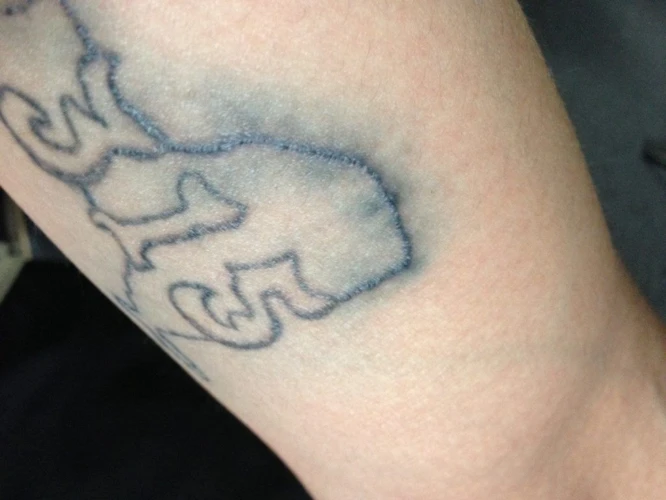
Tattoo bleeding is a common problem experienced by many tattoo owners. It occurs when the ink from the tattoo is drawn out of the skin and mixed with the blood, resulting in a reddish-brown liquid. Bleeding may be caused by a range of factors, from poor aftercare to high pressure during the tattooing process. Some common symptoms of bleeding include redness, itching, and scabbing.
Bleeding is usually a sign that the area is healing. In most cases, it will stop on its own, after a few days. To reduce your chances of developing a tattoo infection, it’s important to keep the area clean and dry. Avoid soaking the area in water, as this can cause further bleeding. Applying a thin layer of moisturizer can help to keep the area hydrated.
If the bleeding persists, it may be a sign that the tattoo is infected. In this case, you should seek medical advice as soon as possible. It’s also important to note that do tattoos bleed when you get them? Yes, they do, but the bleeding should stop within a few hours. If the bleeding persists for more than a few hours, it’s a sign that something is wrong and you should seek medical advice.
Causes of Tattoo Bleeding
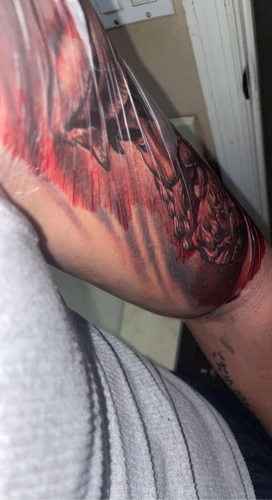
Poor Application
Incorrect technique during the application process can cause a tattoo to bleed ink. If the artist does not apply the ink correctly, it can seep out of the skin and cause the tattoo to look blurry. Additionally, the artist may use too much pressure while applying the tattoo, which can cause the skin to become irritated and bleed.
Poor Aftercare
Tattoo aftercare is essential in order to ensure the tattoo heals properly and doesn’t bleed ink. If the tattoo is not kept clean, it can become infected and the ink may seep out of the tattoo. Additionally, if the tattoo is not kept moisturized, the skin can become dry and crack which can cause the ink to leak out of the skin.
Allergic Reaction
In some cases, a person may be allergic to the ink used in their tattoo, which can cause the tattoo to bleed ink and become irritated. Allergic reactions can be caused by a variety of ingredients found in tattoo inks, such as metals, dyes, and preservatives. If a person is allergic to one of these ingredients, they may experience swelling, redness, and itching around the tattoo, as well as bleeding.
Signs of Tattoo Bleeding
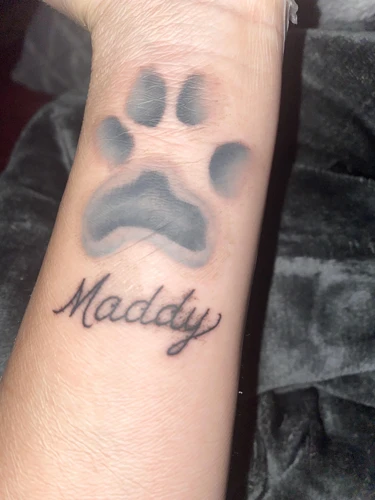
When a tattoo is healing, it is normal for it to be a bit crusty or leak a little bit of clear fluid. However, if the tattoo is bleeding ink, it may be a sign of an infection. Signs of tattoo bleeding include:
- Swelling – The tattooed area may appear swollen and inflamed, and the skin may feel hot to the touch.
- Pus – Pus is a sign that the tattoo is infected and should be looked at by a doctor.
- Redness – Redness and discoloration of the tattooed area may be a sign of infection and should be looked at by a doctor.
- Pain – Pain in the tattooed area is a sign of infection and should be looked at by a doctor.
If you are experiencing any of these signs of tattoo bleeding, it is important to seek medical attention as soon as possible to prevent further complications. Proper aftercare is essential for preventing infection and ensuring that your tattoo heals correctly. To prevent tattoo bleeding, make sure to keep the tattoo clean and moisturized with a gentle, non-scented moisturizer. Avoid direct sun exposure and swimming in chlorinated pools or hot tubs, and avoid picking or scratching at the tattoo. Doing these things will help ensure that your tattoo heals properly and without infection.
How to Prevent Tattoo Bleeding
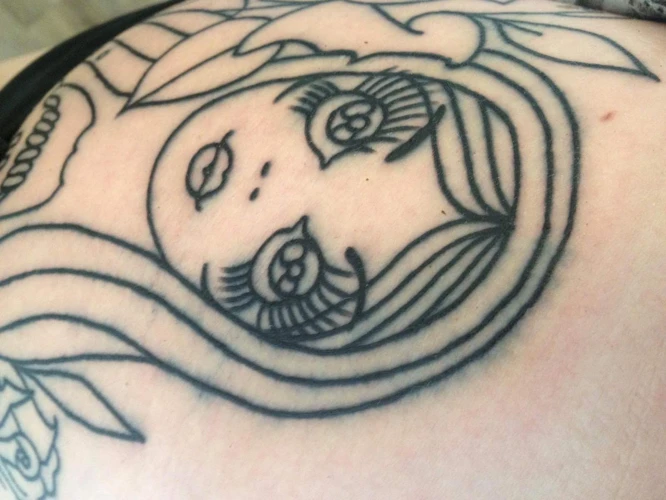
Proper Application
The first step to preventing ink bleeding on a tattoo is proper application. Make sure the tattoo artist is using fresh needles and ink, and that the area is properly shaved and cleaned. The area should also be covered with a thin layer of petroleum jelly for protection.
Proper Aftercare
The next step to preventing tattoo bleeding is to follow the aftercare instructions provided by the artist. This may include applying a thin layer of ointment or lotion to the area and avoiding direct sunlight. Additionally, it is important to keep the area clean and dry, and to avoid picking at the scab that forms.
Avoid Skin Irritants
Finally, it is important to avoid skin irritants, such as strong soaps, perfumes, and other products that could irritate the area. If the area becomes itchy, it is best to avoid scratching and to consult a doctor for advice.
Treatment for Tattoo Bleeding
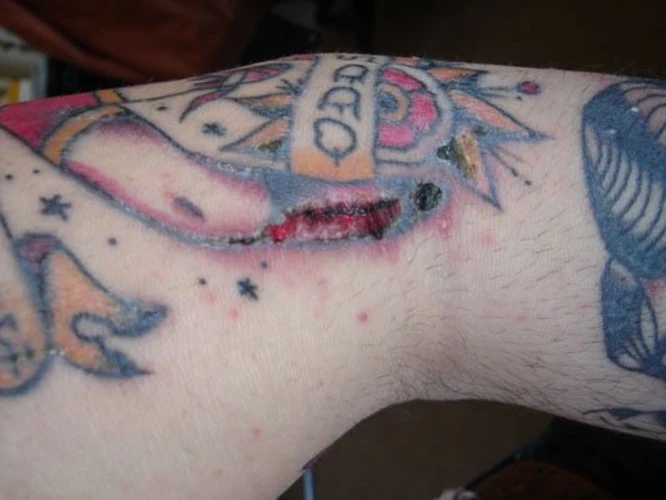
Immediate Treatment: If your tattoo is bleeding, the first thing you should do is to gently dab it with a clean, damp cloth. This should help to stop the bleeding. If the bleeding persists, you should apply pressure to the area with a clean cloth.
Long-Term Treatment: If your tattoo is still bleeding after you have applied pressure, it is important to visit a doctor as soon as possible. If the bleeding is caused by an infection, your doctor may prescribe antibiotics or other treatments to help clear it up. Additionally, you should talk to your doctor about the best way to care for your tattoo in the future. This may involve changing your aftercare routine or using a different type of ointment.
Finally, if the bleeding is caused by a reaction to the ink, you should talk to your tattoo artist about switching to a different ink. The artist may be able to recommend a brand that is less likely to cause a reaction. This can help prevent your tattoo from bleeding ink in the future.
When to See a Doctor
It is important to recognize the signs that a tattoo is infected and should be seen by a doctor.
| Signs of Infection | Actions |
|---|---|
| Redness and inflammation | Apply antibiotic ointment and cold compress |
| Fever | Seek medical attention |
| Unusual discharge | Seek medical attention |
| Severe pain | Seek medical attention |
If a person notices any of these signs, they should seek medical attention as soon as possible. Infections can worsen if not treated properly and can even lead to scarring. It is also important to let a doctor know that the patient has a tattoo, as this may influence their treatment plan.
Frequently Asked Questions
What Type of Ink Is Best for Tattoos?
- Organic: Organic inks, such as plant-based inks, are considered the most natural and safest option for tattoos. They are free from heavy metal contaminants, which can be potentially harmful to your health.
- Vegan: Vegan inks are free from animal-derived ingredients, perfect for those who prefer to avoid animal products. They are often made from plant-based ingredients, such as fruit and vegetables, and are considered safe and non-toxic.
- Pigment: Pigment inks are made from various synthetic materials, such as plastics, and are the most commonly used inks for tattoos. They are known to be long-lasting and are available in a wide range of colors.
- Metallic: Metallic inks are made from synthetic materials, such as aluminum and iron oxides, and are becoming increasingly popular for tattoos. They are bold and vibrant, but can cause allergic reactions in some people.
Ink used for tattoos should always be of the highest quality and free from contaminants. If you are unsure, ask your tattoo artist for advice on the best type of ink for your tattoo.
What is the Most Important Step in Tattoo Aftercare?
Caring for a New Tattoo
- Clean the tattoo gently with lukewarm water and antibacterial soap.
- Pat it dry with a clean, soft cloth.
- Apply a thin layer of a moisturizing lotion or ointment.
- Repeat this process every three to four hours for the first few days.
Avoiding Sun Exposure
- Apply a broad-spectrum sunscreen with an SPF of at least 30 before going outside.
- Reapply sunscreen every two hours.
- Wear clothing that covers the tattoo.
- Try to stay out of direct sunlight for at least two weeks after getting a tattoo.
Keeping the Tattoo Dry
- Avoid swimming, soaking in a bath, or any other activities that may cause the tattoo to become wet.
- Avoid wearing tight clothing that may rub against the tattoo.
The Most Important Step: Moisturizing
- The most important step in tattoo aftercare is to keep the tattoo moisturized.
- Apply a thin layer of a moisturizing lotion or ointment, such as a fragrance-free, dye-free, and alcohol-free lotion.
- Repeat this process every three to four hours for the first few days.
How Do I Avoid Infection After Getting a Tattoo?
- Keep the area clean. Always wash your hands before and after touching your tattoo. Use an antibacterial soap to gently clean the area 2-3 times a day.
- Apply a thin layer of an antibiotic ointment. After you’ve cleaned the area, apply a thin layer of an antibiotic ointment to keep it moist and help prevent infection.
- Dress the area. Cover the area with a clean, dry bandage or gauze pad to protect it from bacteria and dirt.
- Avoid harsh products. Stay away from harsh soaps, lotions, and creams as they can cause irritation and dry out the area.
- Watch for signs of infection. Look out for signs of infection such as redness, swelling, fever, pain, and oozing pus. If you experience any of these symptoms, contact your doctor immediately.
How often should I clean my tattoo?
1. Immediately after the tattooing process is complete
- Remove the bandage and gently rinse the area with lukewarm water and mild, fragrance-free soap.
- Gently pat the area dry with a clean, disposable paper towel.
- Apply a thin layer of fragrance-free lotion.
2. Regularly for the first two weeks
- Gently clean the area twice a day with lukewarm water and mild, fragrance-free soap.
- Pat the area dry with a clean, disposable paper towel.
- Apply a thin layer of fragrance-free lotion.
3. After two weeks, clean the area as needed
- Gently rinse the area with lukewarm water and mild, fragrance-free soap.
- Pat the area dry with a clean, disposable paper towel.
- Apply a thin layer of fragrance-free lotion.
Can I go swimming with a new tattoo?
- No. You should not go swimming with a new tattoo. Water can trap bacteria and cause infection. If you do go swimming with a new tattoo, make sure to cover the affected area with waterproof dressing or clothing and wash it with mild soap and water afterwards.
- Yes. However, it is better to wait a few weeks after getting a tattoo before swimming in a pool or the ocean. This gives the tattoo time to heal, and also prevents it from fading due to the chlorine or salt water.
It is also important to note that even after your tattoo has healed, you should still take care when swimming. Be sure to wear a shirt or rash guard to protect your tattoo from the sun and the chlorine or salt water. Additionally, it is important to always rinse your tattoo with clean water after swimming, to help remove bacteria and chlorine or salt water that may have built up on the tattoo.
Conclusion
Tattoo aftercare is essential to the longevity of your tattoo and should be taken seriously. To prevent tattoo ink from bleeding, it is important to keep the tattoo clean, moisturized, and out of the sun. If your tattoo is still bleeding ink, you should contact your tattoo artist or a medical professional for further treatment.